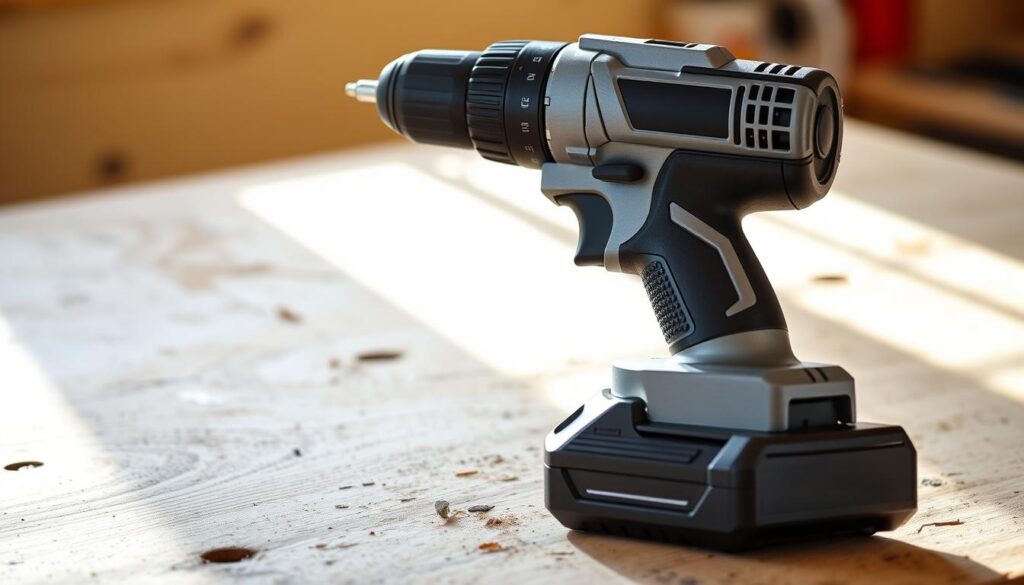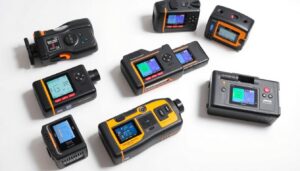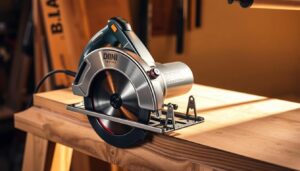Are you tired of being tethered to a power source when working on your home projects? Do you struggle to find the right drill that balances power and portability? You’re not alone. Many DIY enthusiasts and homeowners face this dilemma, seeking a reliable and efficient cordless drill that can handle various tasks.
The right cordless drill can make all the difference in your home projects, providing the freedom to work anywhere without being constrained by a cord. With so many options available, choosing the best one can be overwhelming.
In this article, we’ll explore the key features that make a cordless drill suitable for your needs and review the top models available in the market.
Key Takeaways
- Understanding the key features to look for in a cordless drill for home projects.
- Reviewing the top cordless drill models available in the UK market.
- Comparing battery life, weight, power, and special features.
- Identifying the best value for money cordless drill for your specific needs.
- Tips for maintaining your cordless drill to prolong its lifespan.
Why Every DIY Enthusiast Needs a Quality Cordless Drill
The versatility and convenience offered by a cordless drill make it a vital addition to any DIY toolkit. Whether you’re hanging pictures or building furniture, a quality cordless drill provides the flexibility and power needed for a wide range of home projects.
The Versatility of Cordless Drills in Home Projects
Cordless drills have become an essential tool for DIY enthusiasts due to their versatility and ease of use. Modern cordless drills can tackle virtually any job that corded models can, from drilling into wood, metal, and plastic to driving screws of various sizes. The compatibility of cordless drills with a wide range of bits and attachments makes them suitable for a lot of different applications around the home.
For instance, when working on projects that require drilling into different materials, a cordless drill’s adjustable torque setting and range of available bits make it an invaluable asset. Moreover, the compact design of most cordless drills allows for work in confined spaces, making them ideal for DIY projects that require precision and control.
| Material | Drill Bit Type | Torque Setting |
|---|---|---|
| Wood | Twist Bit | Low |
| Metal | Titanium Coated Bit | High |
| Plastic | Standard Bit | Medium |
Cordless vs. Corded: The Freedom of Mobility
One of the primary advantages of cordless drills over their corded counterparts is the freedom of mobility they offer. Without being tethered to a power outlet, you can work more efficiently in various locations, whether it’s in the garden, attic, or any other area without easy access to power.
This mobility not only enhances productivity but also improves safety by reducing the risk of tripping over cords or being restricted by the length of the cord. Furthermore, cordless drills are generally more convenient for jobs that require working at heights or in awkward positions.
When choosing between a cordless and corded drill, consider the nature of your DIY projects and the level of mobility required. For most home projects, the convenience and flexibility offered by a cordless drill make it the preferred choice.
Understanding Cordless Drill Types and Terminology
To navigate the world of cordless drills effectively, it’s essential to grasp the various types and terminology used. A drill is a fundamental tool for creating holes in materials like wood, metal, or brick, to accommodate screws and other types of fittings.
Drill Drivers vs. Combi Drills: What’s the Difference?
There are two main types of drills: drill drivers and hammer drills, also known as combination or combi drills. Understanding the difference between these two types is crucial for choosing the right tool for your projects. Drill drivers are perfect for wood and metal, while combi drills add a hammering function for masonry work.
- Drill drivers are ideal for drilling into wood, metal, and plastic.
- Combi drills offer the versatility of drilling into various materials, including masonry.
Key Technical Terms: Voltage, Torque, and Chuck Size
Several technical terms are essential to understanding cordless drills. Voltage indicates the power potential of a cordless drill, with higher voltage models (18V and above) offering more power for demanding tasks.
- Torque, measured in Newton metres (Nm), refers to the rotational force a drill can generate.
- Chuck size, typically 10mm or 13mm on home-use drills, determines the maximum diameter of the drill bit the tool can accommodate.
- Speed settings allow you to match the rotation rate to your task, with lower speeds for driving screws and working with metal, and higher speeds for drilling into wood.
Understanding these technical terms will help you make an informed decision when choosing a cordless drill. Additionally, familiarising yourself with terms like clutch settings and impact function will help you utilise all the features your cordless drill offers.
Essential Features to Consider When Choosing a Cordless Drill
Choosing the right cordless drill involves considering various factors that affect performance and usability. When you’re in the market for a cordless drill, several key features can make or break your DIY project’s success.
Battery Life and Charging Time
Battery life is a crucial consideration when choosing a cordless drill, with capacity measured in Ampere hours (Ah). A higher Ah rating means longer runtime between charges, which is essential for extended DIY projects. For instance, a 5.0 Ah battery can power a drill for an entire day, making it ideal for heavy-duty tasks.
The charging time of batteries varies significantly between models. Some rapid chargers can restore power in as little as 30 minutes, while others may take several hours. This can be a decisive factor if you’re working on time-sensitive jobs.
Weight and Ergonomics
Weight and ergonomics directly impact user comfort and fatigue during prolonged use. Lighter drills (around 1.5-2kg) are easier to handle for extended periods, while heavier models often offer more power but can cause strain during overhead work. A well-designed handle with a comfortable grip and balanced weight distribution makes a significant difference in how the drill feels during use.
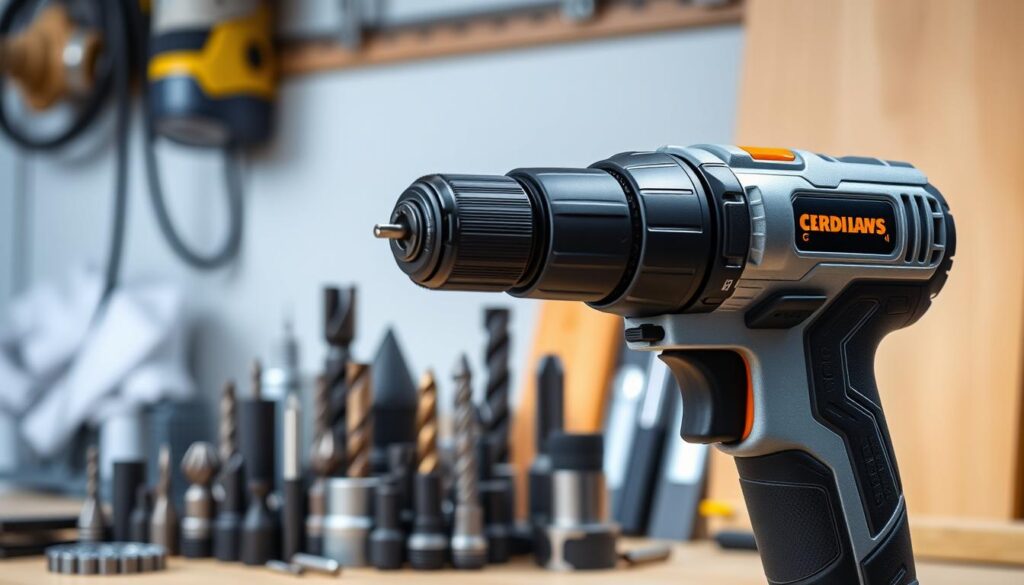
Speed Settings and Control
Variable speed settings allow for greater control when working with different materials. Lower speeds are ideal for driving screws and drilling into metal, while higher speeds are better suited for wood and plastic. Many modern cordless drills feature electronic speed control and clutch settings that help prevent over-driving screws and provide consistent performance across various applications.
| Feature | Description | Importance |
|---|---|---|
| Battery Life | Measured in Ah, affects runtime | High |
| Charging Time | Varies between models, affects downtime | Medium |
| Weight and Ergonomics | Affects user comfort and fatigue | High |
| Speed Settings | Allows control over different materials | High |
When selecting a cordless drill, it’s also worth considering additional features such as built-in LED work lights, which illuminate dark work areas and improve accuracy. The overall design, including the placement of controls and the bit change system, contributes significantly to the tool’s usability for DIY enthusiasts of all experience levels.
Top 5 Cordless Drills for Home Use
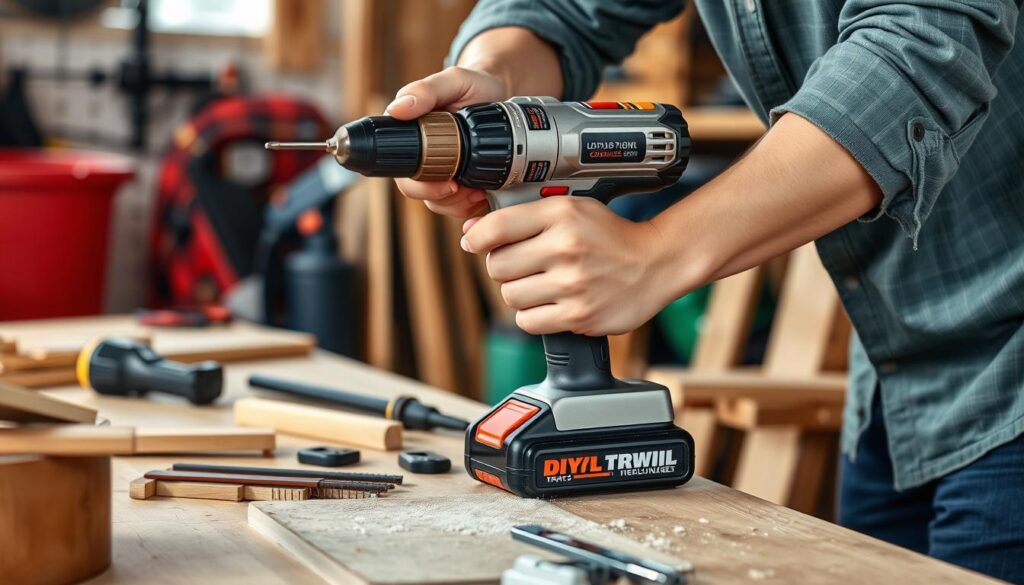
The right cordless drill can be a game-changer for home projects, and we’ve identified the top5 models. Our selection is based on extensive testing across multiple performance categories, including drilling power, battery life, ergonomics, and value for money.
How We Tested and Selected These Models
We’ve evaluated each drill’s performance in real-world scenarios that mimic typical home projects, from hanging shelves to assembling furniture and building garden structures. The testing process involved drilling into various materials, including wood, metal, and masonry, to assess versatility and power across different applications.
What Makes These Drills Stand Out for Home Projects
Each drill in our top5 offers a unique set of features that makes it particularly suitable for specific types of home projects or user preferences. We’ve paid special attention to factors that matter most to home users, such as ease of use, storage convenience, and the availability of compatible accessories.
Our selection includes models across different price points, ensuring options for every budget while maintaining a focus on quality and performance. The drills in our selection represent the best balance of power, portability, and user-friendly features currently available on the market for home use.
DeWalt 20V Max Compact Brushless Drill/Driver DCD777C2
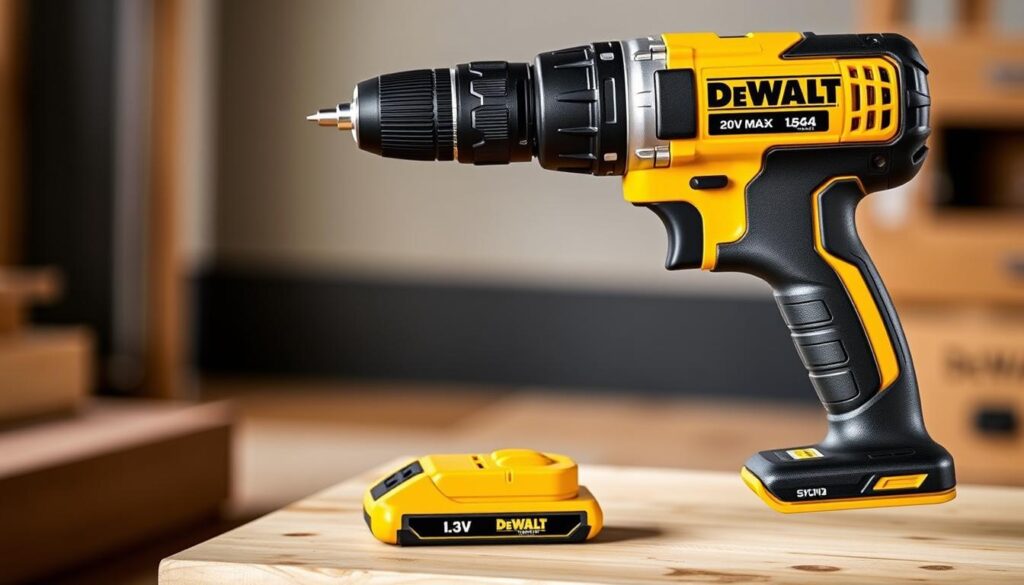
For those seeking a reliable and powerful cordless drill, the DeWalt 20V Max Compact Brushless Drill/Driver DCD777C2 is an excellent choice. This tool combines powerful performance with a lightweight design, making it ideal for extended use during home projects.
Overview
The DeWalt 20V Max Compact Brushless Drill/Driver DCD777C2 is a versatile tool that is part of the DeWalt 20V Max system, allowing it to share batteries with over 200 other DeWalt tools. This drill/driver is designed for a wide range of tasks, from drilling through wood and metal to driving screws with precision.
Pros
Key Benefits:
- Compact and lightweight design, weighing only 3.26 lbs.
- Brushless motor delivers 500 in-lbs of torque for enhanced performance.
- Includes two 1.5Ah batteries for continuous work while one charges.
- Ergonomic handle design with textured grip for reduced fatigue.
- Built-in LED light for improved visibility in dimly lit areas.
Cons
Areas for Improvement:
- The included 1.5Ah batteries may require more frequent charging during intensive projects.
- Battery life is somewhat limited compared to models with higher capacity batteries.
Performance in Home Projects
The DeWalt 20V Max Compact Brushless Drill/Driver DCD777C2 has demonstrated impressive performance in various tests. It cut through a solid core door with a 5-inch hole saw in just 17 seconds and drove a 5-inch lag bolt to its full depth without strain. Its ability to handle demanding tasks makes it a valuable tool for homeowners and DIY enthusiasts.
This drill’s performance, combined with its compatibility with the DeWalt 20V Max system, makes it a great value for both current DeWalt tool owners and those looking to start or expand their tool collection.
Milwaukee M18 Fuel 1/2″ Drill Driver
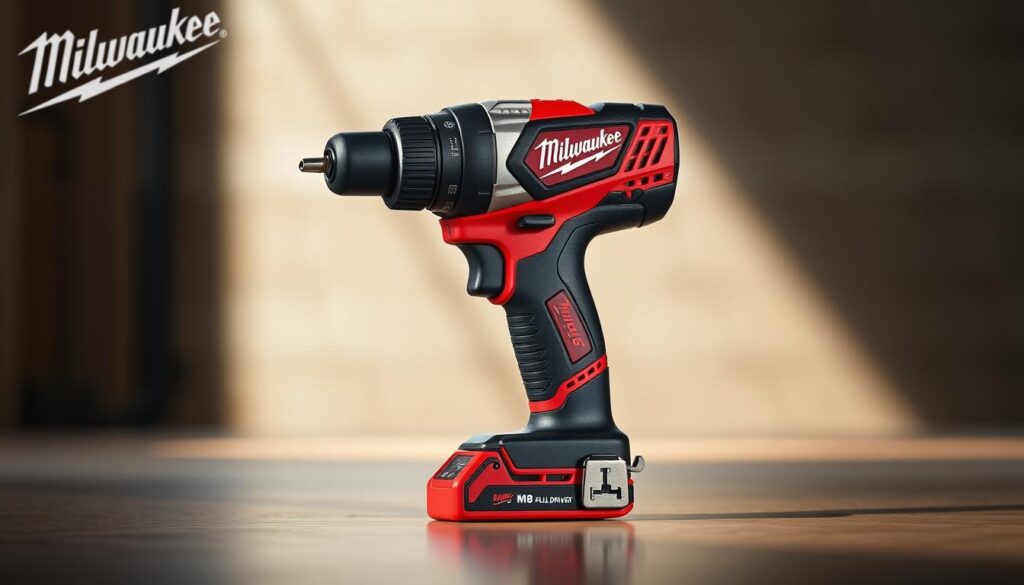
With its impressive 1,200 in-lbs max torque, the Milwaukee M18 Fuel 1/2″ Drill Driver is designed for demanding tasks. This drill is a prime candidate for those seeking a robust cordless tool capable of handling heavy-duty applications.
Overview
The Milwaukee M18 Fuel 1/2″ Drill Driver is a professional-grade tool that delivers exceptional power and performance. It features a brushless motor technology that not only provides superior drilling and driving capabilities but also extends battery life and tool longevity.
Pros
This drill offers several advantages, including its ability to drive large screws with ease and its efficient battery performance. The 1/2-inch all-metal chuck accommodates a wide range of bits and accessories, providing versatility for various drilling and driving applications.
Cons
One potential drawback is its weight, at just over 4 lbs, which may cause fatigue during extended overhead work. Additionally, the premium price point, especially when purchasing batteries separately, may be a consideration for some buyers.
Performance in Home Projects
In testing, the Milwaukee M18 Fuel 1/2″ Drill Driver demonstrated remarkable performance, drilling through a solid core door with a 5-inch hole saw in just 15 seconds. Its REDLINK PLUS intelligence system provides overload protection and optimised performance when tackling tough materials like wood or metal.
The ergonomic handle design with textured grip offers excellent control and comfort, while the built-in LED light effectively illuminates the work area for precision in dimly lit spaces. Overall, the Milwaukee M18 Fuel 1/2″ Drill Driver is a worthwhile investment for serious DIY enthusiasts and professionals alike, offering the power and performance needed for demanding home projects.
Makita 18V LXT 1/2″ Driver-Drill XFD14Z
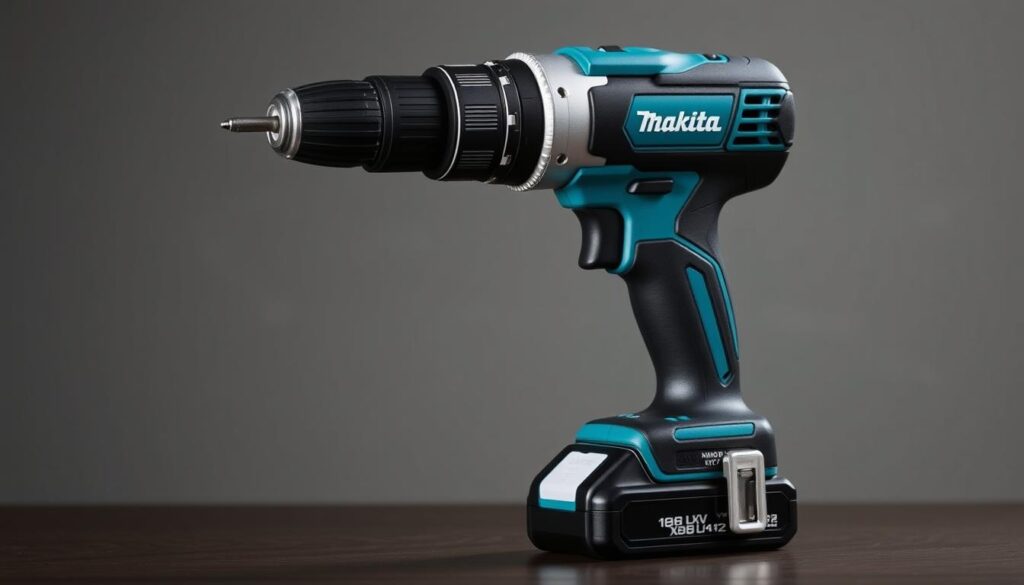
With its robust design and efficient battery life, the Makita 18V LXT 1/2″ Driver-Drill XFD14Z stands out among cordless drills. This model is part of Makita’s 18V LXT range, known for its high-performance and reliability.
Overview
The Makita 18V LXT 1/2″ Driver-Drill XFD14Z is a well-balanced and incredibly comfortable combi drill kit. It produces a serious amount of power where it’s needed, thanks to its 18V motor and 62 Nm of torque. The ergonomics are brilliant, with an expanse of grippy black TPE material on the handle, making it comfortable to use for extended periods.
Pros
This drill has several advantages, including its exceptional drilling performance in various materials and its dual LED work light, which provides excellent visibility in dark work areas. Additionally, the Makita 18V LXT battery platform offers compatibility with over 275 tools, making it an excellent entry point into a comprehensive tool system.
Cons
While the Makita 18V LXT 1/2″ Driver-Drill XFD14Z is a high-quality tool, it does come with a premium price tag. Some users may find it out of their budget, although the two 5.0 Ah batteries included make the kit worthwhile.
Performance in Home Projects
During testing, the Makita demonstrated exceptional drilling performance in various materials, with the 1/2-inch chuck accommodating larger bits for more demanding applications. The drill’s electronic speed control maintains consistent RPM even under load, ensuring smooth performance when driving screws into dense materials like hardwood. The Makita 18V LXT 1/2″ Driver-Drill XFD14Z is an excellent choice for homeowners who regularly undertake substantial DIY projects.
The Makita 18V LXT 1/2″ Driver-Drill XFD14Z features Makita’s Star Protection Computer Controls™, which prevents overheating and overloading, extending the life of both the tool and battery. This is a significant advantage for long-term value, making the drill a worthwhile investment for those who use it frequently.
Bosch 12V Max Drill/Driver Kit PS31-2A
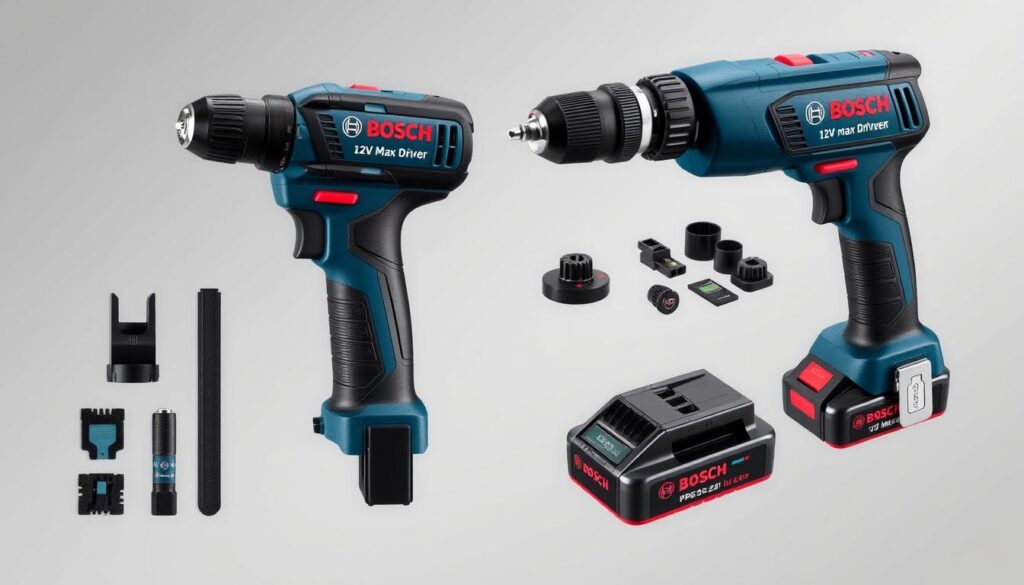
For those on a budget, the Bosch 12V Max Drill/Driver Kit PS31-2A is an excellent choice, offering a perfect blend of power and portability. This compact drill is designed for homeowners and DIY enthusiasts who need a reliable tool for light to medium home projects.
Overview
The Bosch 12V Max Drill/Driver Kit PS31-2A is a versatile and efficient tool that packs plenty of punch despite its compact size. Weighing just 2.17 lbs, it is lightweight and ergonomic, making it ideal for working in tight spaces and reducing fatigue during extended use.
Pros
The kit includes two 2.0Ah batteries, providing adequate runtime for most home projects. The drill features a 3/8-inch chuck that accommodates most common drill and driver bits. Its ergonomic handle design with soft-grip zones enhances comfort and control.
Cons
The batteries require 85 minutes to recharge, which is longer than some competitors. While it performs admirably in most household drilling and driving tasks, it may struggle with larger fasteners or dense hardwoods.
Performance in Home Projects
During testing, the Bosch 12V Max Drill/Driver Kit PS31-2A demonstrated impressive performance for its size. It drilled through a solid core door with a 5-inch hole saw in 70 seconds, showcasing its capability for handling various home improvement tasks. The integrated LED light effectively illuminates the work area, although it only operates when the trigger is engaged.
In wood applications, this drill creates clean holes and drives screws with precision, making it a valuable addition to any DIYer’s arsenal. While not suitable for heavy-duty construction work, it offers excellent value for homeowners seeking a reliable, lightweight drill for general household maintenance and light DIY projects.
Craftsman V20 1/2-In. Drill/Driver Kit CMCD700C1
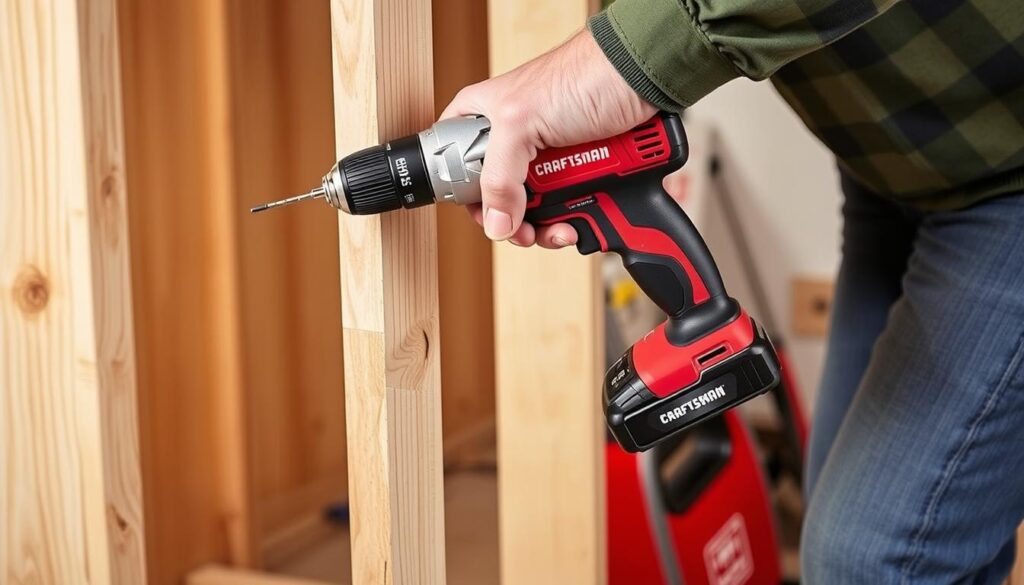
The Craftsman V20 1/2-In. Drill/Driver Kit CMCD700C1 offers impressive performance at an affordable price, making it a valuable addition to any homeowner’s or DIY enthusiast’s toolkit.
Overview
This drill/driver kit is part of the Craftsman V20 platform, known for its reliability and versatility. The kit includes a 1/2-inch drill/driver, a 1.3Ah battery, and a charger, providing a comprehensive solution for various drilling and driving tasks.
Pros
The Craftsman V20 drill/driver boasts several key advantages, including its 280 in-lbs of torque, which enables it to handle demanding tasks with ease. The 1/2-inch chuck provides flexibility for using different bit sizes, and the ergonomic design ensures a comfortable grip during extended use.
Cons
While the Craftsman V20 drill/driver is a robust tool, it has some limitations. The single 1.3Ah battery may not provide sufficient runtime for larger projects, and the V20 platform has fewer compatible tools compared to some competing systems.
Performance in Home Projects
During testing, the Craftsman V20 drill/driver demonstrated impressive performance in various home projects. It successfully drilled holes up to 1-inch in diameter in wood without bogging down and provided excellent control when driving 3-inch deck screws. For more information on other top-rated drills, you can visit our page on the best drills.
The drill’s 24-position clutch allowed for precise control when driving screws into different materials, preventing over-driving and potential damage to work surfaces. While it may not match the performance of premium models in extreme tests, it offers reliable service for most household tasks.
Understanding Voltage: 12V vs. 18V vs. 20V Drills
Cordless drills come in various voltages, including 12V, 18V, and 20V, each designed for specific applications and user needs. The voltage of a cordless drill is a critical factor in determining its power output and suitability for different tasks.
The difference between an 18V drill and a 20V drill is often just a marketing term, as both can refer to drills with batteries that can be charged to a maximum of 20 Volts. Essentially, they offer the same amount of power output.
When to Choose a 12V Drill
12V drills are ideal for light-duty household tasks. They offer an excellent balance between power and portability, making them perfect for working in tight spaces or overhead. Their compact size and reduced weight (typically 2-2.5 lbs) make them more comfortable for extended use and less fatiguing for users who don’t require maximum power.
These drills are suitable for tasks such as assembling furniture, hanging pictures, or other delicate work that doesn’t demand high torque or drilling capability.
When to Opt for Higher Voltage Models
18V and 20V drills provide significantly more power for tackling tougher materials and larger fasteners. They are the better choice for jobs involving hardwoods, masonry drilling with hammer function, or when using large diameter hole saws for tasks like installing door hardware.
For most homeowners, an 18V/20V drill offers the best balance of power and versatility, handling everything from delicate cabinet hardware installation to deck building. When deciding between voltage options, consider the range of tasks you’ll perform. Many professional users own both a 12V and an 18V drill, using the smaller model for finish work and the larger one for construction tasks—a strategy home DIYers might consider if budget allows.
Battery Technology and Runtime
Understanding the battery technology behind cordless drills is essential for making an informed purchase decision. The type of battery used can significantly impact the drill’s runtime, power, and overall usability.
Lithium-Ion Batteries: Capacity and Performance
Modern cordless drills are predominantly powered by lithium-ion batteries, which offer several advantages over older technologies. These batteries provide higher energy density, longer runtime, and are less prone to memory effect compared to nickel-cadmium batteries.
- Higher Capacity: Lithium-ion batteries with higher Ampere hour (Ah) ratings provide longer runtime. For instance, a 4.0Ah battery will generally last twice as long as a 2.0Ah battery in the same drill under similar conditions.
- Trade-off between Runtime and Portability: While higher capacity batteries offer longer runtime, they also add weight to the drill. Users must consider their typical projects to balance runtime and portability.
- Temperature Sensitivity: Lithium-ion batteries perform best between 10-30°C. Their performance drops significantly in very cold conditions, affecting the drill’s overall usability.
Tips for Maximising Battery Life
To get the most out of your cordless drill’s battery, follow these best practices:
- Avoid Deep Discharge: Lithium-ion batteries prefer partial discharge cycles rather than deep ones. Avoid completely draining the battery before recharging.
- Proper Storage: Store batteries at around 40% charge if they won’t be used for extended periods. Keep them in a cool, dry place away from direct sunlight.
- Smart Battery Management: Many modern cordless drills feature smart battery management systems that prevent overcharging, over-discharging, and overheating, thus extending the battery’s lifespan.
- Fast Charging: For users who undertake a lot of drilling work, investing in a fast charger can significantly reduce downtime. Some models can recharge a battery in as little as 30 minutes.
Considering the entire ecosystem of tools when choosing a cordless drill is also crucial. The ability to share batteries across multiple tools from the same manufacturer can provide significant cost savings over time.
Chuck Size and Bit Compatibility
The chuck size and bit compatibility of a cordless drill are key factors that determine its versatility and effectiveness in various home projects. The chuck is the mechanism at the front of a drill that holds bits in place.
3/8-Inch vs. 1/2-Inch Chucks
Most drills come with either a 3/8-inch (10mm) or 1/2-inch (13mm) chuck. A 3/8-inch chuck is typically found on lighter-duty drills and is sufficient for most household tasks, accommodating the most commonly used drill bits for wood, metal, and plastic. On the other hand, the 1/2-inch chuck found on more powerful drills allows for the use of larger diameter bits and accessories, such as hole saws, spade bits, and masonry bits for more demanding projects.
| Chuck Size | Typical Use | Bit Compatibility |
|---|---|---|
| 3/8-inch (10mm) | Lighter-duty tasks, household projects | Most common drill bits for wood, metal, plastic |
| 1/2-inch (13mm) | More demanding projects, heavy-duty tasks | Larger diameter bits, hole saws, spade bits, masonry bits |
Recommended Bits for Different Home Projects
For wood projects, a basic set of twist drill bits ranging from 1/16″ to 3/8″ will handle most tasks. Spade bits are ideal for creating larger holes for running cables or installing door hardware. For metal drilling, specific HSS (High-Speed Steel) bits, preferably titanium-coated for durability, should be used at lower speeds with cutting oil for best results.
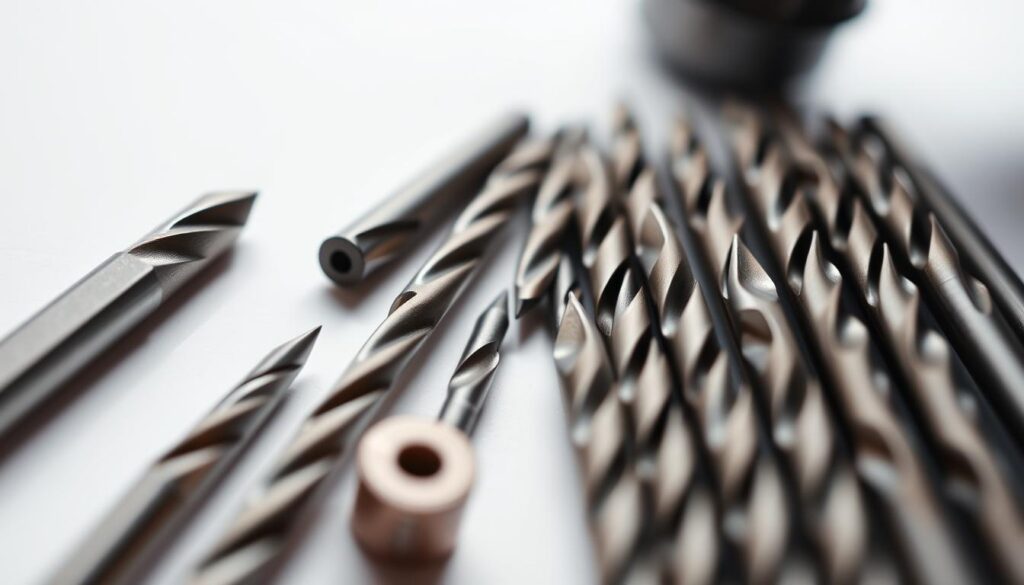
For more information on choosing the best cordless drill, you can visit Which? review on cordless drills.
Brushed vs. Brushless Motors: Worth the Investment?
Brushless motors have revolutionised the cordless drill market, offering significant improvements over traditional brushed motors. As you consider your next cordless drill purchase, it’s crucial to evaluate the benefits and drawbacks of brushed versus brushless motors.
How Brushless Technology Improves Performance
Brushless motors eliminate the physical contact points found in brushed motors, using electronic controllers to regulate power. This results in up to 50% longer runtime from the same battery compared to equivalent brushed models. The electronic control in brushless drills allows for more precise speed settings and torque management, providing better performance across a wider range of applications.
For instance, brushless drills deliver more power in a smaller package, with many 18V brushless models outperforming larger brushed competitors while maintaining a more compact and lightweight design. This makes them particularly beneficial for tasks requiring both power and precision.
Long-Term Cost Benefits of Brushless Motors
While brushless drills typically cost 25-50% more than their brushed counterparts initially, the investment often pays for itself through extended tool life, reduced battery consumption, and improved performance. For those who use their drills frequently or for demanding tasks, brushless technology offers significant long-term value.
Moreover, brushless motors run cooler and more efficiently, extending the life of the motor and reducing strain on batteries. This potentially doubles their service life in high-demand applications, particularly in higher-voltage (18V and above) drills where the power and efficiency gains are most noticeable.
In conclusion, when choosing a cordless drill, considering the type of motor is crucial. Brushless motors offer substantial advantages in terms of performance, efficiency, and long-term cost savings, making them a worthwhile investment for many users.
Special Features and Accessories to Look For
To get the most out of your cordless drill, look for special features and accessories that improve functionality. These enhancements can significantly impact your drilling experience, making tasks easier and more efficient.
LED Lights and Their Placement
LED lights have become a standard feature on most quality cordless drills. However, their placement is crucial for their effectiveness. Lights positioned at the base of the handle can cast shadows, while those surrounding the chuck provide more even illumination. The best implementations include a delay feature that keeps the light on for 10-20 seconds after releasing the trigger, allowing you to inspect your work without maintaining pressure on the trigger.
Belt Clips and Bit Storage
Belt clips are invaluable when working on ladders or moving between tasks, keeping the drill accessible without occupying a hand. Integrated bit storage on the drill body or battery base saves time during projects that require frequent bit changes. Magnetic bit holders are also useful, providing a secure place to temporarily hold screws or small bits during work.
Cases and Kit Contents
The quality of the included case or bag affects both tool protection and organisation. Hard cases offer better protection but take up more space, while soft bags provide more flexible storage options. Many premium drill kits include valuable accessories such as auxiliary handles for better control during high-torque applications and depth stops for consistent drilling. The inclusion of multiple batteries in a kit significantly enhances the value proposition, allowing continuous work while alternating charging.
Some manufacturers offer innovative features like built-in bubble levels, work lights that function independently of the drill operation, or removable dust collection systems that can significantly improve the drilling experience. When choosing a cordless drill, consider these features and accessories to ensure you get the most out of your tool.
Budget Considerations: Value for Money
Evaluating the total value proposition of a cordless drill is essential, rather than just focusing on the initial purchase price. When considering your budget, it’s crucial to think about the long-term benefits and potential cost savings that a quality drill can offer.
Affordable Options Under £100
Entry-level cordless drills under £100 can provide sufficient performance for occasional household tasks. Brands like Black+Decker, Ryobi, and Craftsman offer reliable options in this price range. These budget models typically feature lower voltage (12V) or smaller battery capacity (1.3-1.5Ah), which may be adequate for hanging pictures, assembling furniture, and other light DIY tasks.
- Lower voltage or smaller battery capacity
- Sufficient for light DIY tasks
- Brands like Black+Decker, Ryobi, and Craftsman
However, the primary compromises in budget drills include shorter battery life, less power for demanding applications, and fewer features like work lights or multiple speed settings.
Mid-Range and Premium Options
Mid-range options (£100-£200) represent the sweet spot for most home users, offering significantly better performance, battery life, and durability without reaching professional price points. At the premium end (£200+), you’re investing in professional-grade tools with brushless motors, extended warranties, superior ergonomics, and compatibility with extensive tool ecosystems.
- Mid-range options offer better performance and durability
- Premium options feature brushless motors and extended warranties
- Consider long-term value and potential cost savings
When choosing between price points, consider the long-term value—a more expensive drill with a brushless motor and larger battery capacity may prove more economical over time through reduced battery replacements and longer tool life. For many DIY enthusiasts, purchasing a drill kit that includes multiple batteries, a charger, and a case offers better value than buying these components separately.
If you plan to expand your tool collection over time, prioritise brands with a wide range of compatible 18V tools that can share batteries, potentially saving hundreds of pounds in future purchases.
Conclusion: Choosing the Right Cordless Drill for Your Home Projects
To ensure you get the most out of your DIY projects, choosing a cordless drill that meets your specific needs is crucial. The key to making the right choice lies in balancing several factors, including power requirements, frequency of use, and budget constraints.
For occasional DIY projects and light household tasks, a 12V drill with a 2.0Ah battery will likely provide sufficient power and runtime. However, for more substantial home renovation projects or working with harder materials, consider an 18V/20V model with at least 3.0Ah batteries for additional power and endurance.
It’s also important to consider battery compatibility across a manufacturer’s tool range, especially if you plan to expand your collection of cordless tools. Features like LED lights, ergonomic grips, and battery indicators can significantly impact your user experience.
- Our top pick for overall value and performance is the DeWalt 20V Max Compact Brushless Drill/Driver.
- For those on a tighter budget, the Craftsman V20 provides impressive performance at a more accessible price point.
Ultimately, the best cordless drill is one that meets your specific needs. Consider the types of materials you’ll be working with, the size of holes you’ll need to drill, and the weight you’re comfortable handling. Investing in a quality drill from a reputable manufacturer will pay dividends in reliability and performance. Proper maintenance, including battery care and storing the drill in a dry environment, will extend its useful life.
